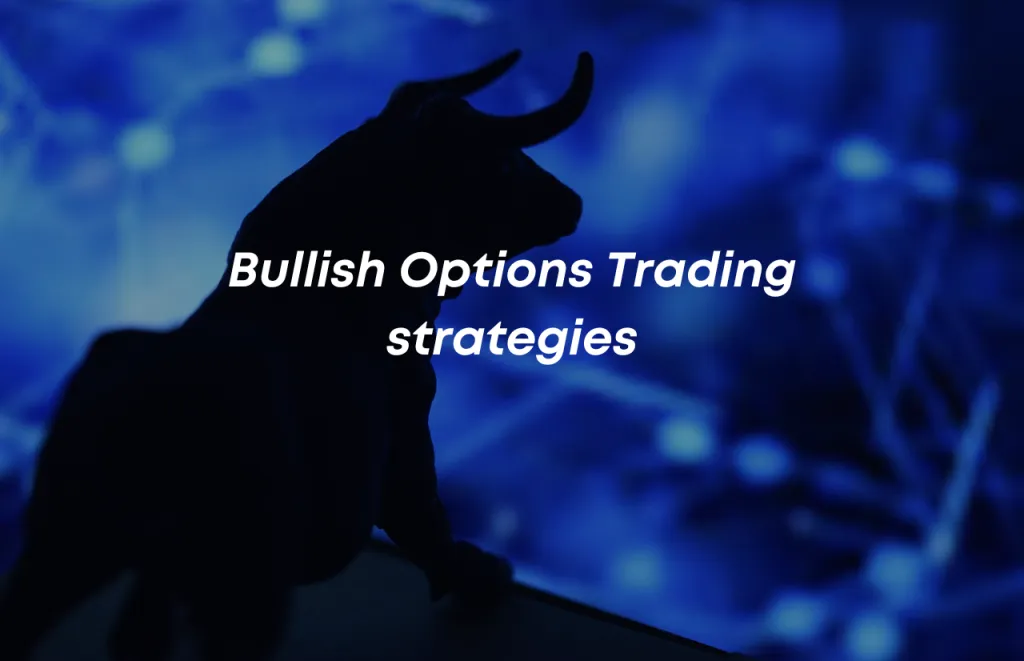Bullish options trading strategies – Introduction

Investing in the stock market can be a scary prospect for many people, but what if you could take advantage of the potential to make money without taking too much risk? Bullish options trading strategies may be the answer. Options trading involves buying and selling contracts that give you the right to buy or sell an asset at a certain price within a set time frame. These strategies allow you to benefit from stock market movements without having to buy the actual shares or assets. If done properly, you can potentially profit from bullish moves in the market even when stocks are declining. In this blog post, we’ll provide a comprehensive introduction to bullish options trading strategies and how they can help you become a more successful investor. Read on to learn more!
What Is A Bullish Options Trading Strategy?
Bullish options strategies are simply policies that several traders use when they anticipate an increase in asset price. In order to select the best options strategy, it is critical to determine how much the underlying price will rise and the timeframe over which the rally will occur.
Buying call options in a simple policy gains advantage in a rising market, but if a trader fails to cover their position for any unexpected and significant price fall, it increases many risks for a trader. Furthermore, acquiring while the market is somewhat bullish is not a wise policy. Rather than buying a call, traders should consider a bull call spread strategy.
A bull call spread strategy is a trading strategy used by many traders when the market’s price rise is modest. This strategy creates a range by using two different types of call options, one with a lower strike price and another with a higher strike price.
Using this strategy prevents the trader from making a profit while also protecting and preventing losses. Traders can profit from rising stock prices by purchasing a simple call option at a premium. The premium is calculated using the strike price and the security’s current price.
The premium will be high if the strike price and current price are both close to each other in terms of value. However, if the stock price remains unchanged or falls, they can limit their losses by reducing the premium value of the option. When the premium price rises, the gain from the stock price rise may be offset.
Furthermore, they will be required to pay brokerage to the agent, which will be added to the cost of the spread. Unless the stock price rises significantly above the break-even point, purchasing a call option reduces your profit from the transaction. A stock’s break-even point is equal to the premium paid plus the stock price.
What are the Types of it?
Depending on the strength of the bullish pull, a trader can employ a variety of bullish options strategies in a bullish market.
However, the following are nine different and widely used bullish options strategies:

Long call
Buying a call is the most fundamental and straightforward option strategy. It creates the first options trade for a person who is already familiar with buying and selling stocks and wants to trade options.
Purchasing a call strategy is straightforward. When you buy a call, you are indicating that you are bullish. Purchasing a Call indicates that you are extremely bullish and anticipate that the underlying index or stock will rise in the future.
Short Put
A short put indicates that an investor is willing to buy an underlying asset at a calculated price in the future. If the price rises in the future, an investor will benefit.
However, using this strategy involves risk because it involves the purchase of a physical asset, which increases their risk volume.
Bull call spread
It denotes that an investor is purchasing an in-the-money (ITM) call option while selling an out-of-the-money (OTM) call option.
The premium earned from selling a call option is used to offset the premium paid for the long call.
Bull Put spread
A bull put spread necessitates two transactions: purchasing one bull put and simultaneously selling another. However, because of the high stakes involved, it is considered a complicated strategy and is clearly not recommended for all beginners.
Bull ratio spread
The bull ratio spread provides more flexibility, but it appears to be a complex strategy. Bull call spreads involve the purchase and sale of two calls in a ratio.
Typically, an investor sells more than he or she purchases. They can profit from this strategy even if asset prices fall or there is no expected rise.
This strategy, however, is recommended for more experienced traders and not for new investors.
Short Bull ratio spread
Traders can enter into a short bull ratio spread when they have faith and are fairly confident that the asset price will significantly rise. But they also have the courage to cover any loss if the price falls.
It consists of two transactions: Writing calls at a lower strike rate and buying calls at a higher strike rate for the same underlying and expiration date.
Bull butterfly spread
Bull butterfly spreads are classified into two types: call bull butterfly and put bull butterfly. A bull butterfly, on the other hand, is a complex strategy that involves three transactions and creates a debit spread.
Bull condor spread
There are two types of bull condor spreads: call and put condor spreads. This strategy generates a debit that is distributed across four different transactions.
Several traders use it to minimise upfront costs and maximise profit. When they are confident that security prices will rise to their level of expectation.
Bull call ladder spread
A bull call ladder spread is made up of buying one call and simultaneously writing two calls with different strikes.
Traders can also profit by entering a leg at various times by trading call options.
Follow us on Instagram.









